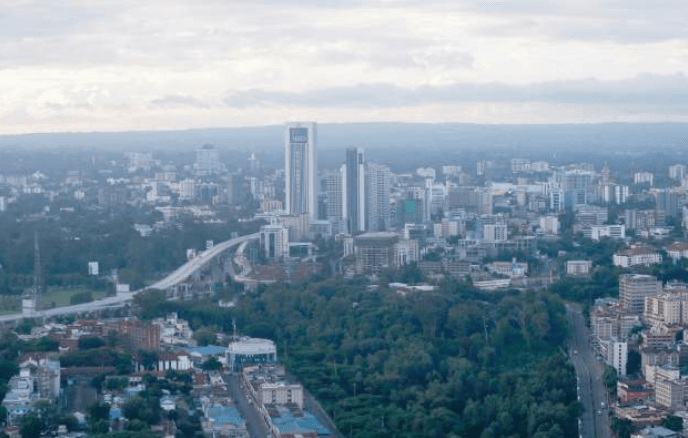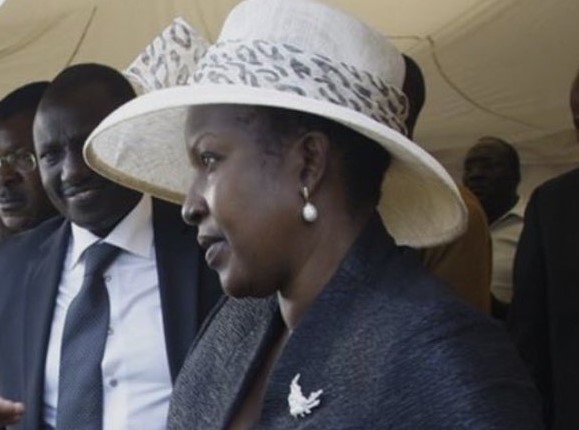
Kenyan households are still struggling to meet basic needs despite inflation dropping to a 14-year low last month, as commodity prices and other expenses remain high.
The Kenya National Bureau of Statistics last Thursday indicated year-on-year inflation rate as measured by the Consumer Price Index (CPI) eased to 2.7 per cent in October 2024.
This however means that the general price level was 2.7 per cent higher in October 2024 than it was in October 2023.
According to KNBS, the price increase was mainly driven by the rise in prices of commodities under food and non-alcoholic beverages ( 4.3 per cent) and housing, water, electricity, gas and other fuels ( 0.4 per cent), between October 2023 and October 2024.
“During the period, however, prices of 50 kWh of electricity and 200 kWh of electricity increased by 0.3 per cent and 0.2 per cent, respectively,” KNBS said in a statement.
This, even as commodity prices in transport sector declined by 1.3 per cent between October 2023 and October 2024, on the back of lower fuel prices.
Prices of sugar, maize flour-sifted and fortified maize flour, common foods in many homes, decreased by 2.3, 1.8 and 1.7 per cent.
An analysis of the KNBS data however shows food and non-alcoholic beverages index increased by 0.5 per cent between September 2024 and October 2024.
In particular, prices of mangoes, carrots and oranges rose by 9.9, 5.7 and 5.1 per cent, respectively, between September 2024 and October 2024.
The price of a kilo of sukuma wiki, a common vegetable considered affordable by most homes, has recorded a 27 per cent increase to retail at an average Sh79.37 compared to Sh62.11 in October last year.
A kilo of beef (with bones) which was going for average Sh572 last year is now costing Sh650, while a litre of cooking oil (salad) is going for Sh332 up from Sh325.
The overall lower month-on month inflation numbers hence do not match reality on the ground as households continue to decry a high cost of living amid low spending power and empty pockets in the wake of high taxation.
Education, healthcare and household maintenance remains among the biggest concerns for Kenyans as indices for the three increased 2.9 per cent, three per cent and 4.1 per cent, official data shows.
Rhoda Kemunto, a resident of Umoja in Nairobi says she has had to cut on luxuries since her monthly income has reduced on low business activities, where her customers’ spending has gone downs.
In her house, she considers three meals per day a luxury and has had to cut this to two.
The mother of three says it will become even challenging now that schools are closed and all her children are home.
“I expect expenditure on food and utilities such as food and electricity to go up. One thing I am certain is I am not going to spend on unnecessary entertainment and items such as toys and taking them out,” she said.
For Felita Nakah, health and education have taken a toll on her.
“ This is something the government must look into and ease the burden. For agriculture, we must invest to ensure food security,” Nakah said.
The Consumers Federation of Kenya (Cofek) secretary general Stephen Mutoro said:
“We appreciate that generally inflation has dropped as prices of some staple foods have dropped but save for some foodstuffs, in particular maize, the reality is different. The cost of fuel is still up, taxes, income and consumer spending continues to shrink.”
RAID ON PAYSLIPS
The employed have also not been spared as they navigate squeezed earnings after government raided their payslips for statutory deductions to fund the newly rolled out Social Health Insurance Fund and affordable housing, reducing their take-home.
While it has been effected on payrolls, each Kenyan is expected to pay 2.75 per cent of their gross income, the highest levy on salaries since independence, to the healthcare programme.
Kenyans in the informal sector are expected to pay 2.75 per cent of their earnings, to be determined by a means testing tool that is still non-operational.
Housing levy is taking 1.5 per cent of an employee’s monthly gross salary with employers required to match the same, to make it three per cent.
This is in addition to PAYE, and NSSF deductions with up to 30 per cent of salaries now going to taxes.
With planned increase in NSSF deductions, set to be six per cent of gross earnings, it is estimated that up to 40 per cent of an individual’s salary will go into taxes, further reducing take-home salaries hence cutting the spending power.
“Low inflation amidst high interest rates, declining private sector credit growth and anaemic private sector activity is an indication of deteriorating economic growth. It is important to note that inflation is still a growth in prices, therefore the high cost of living persists,” data analyst, Mihr Thakar, told the Star.
"Compounded by higher taxation rates, this greatly impacts the small 3.1 million strong formal sector," Thakar said.
“A third of formal sector are public sector workers so the tiny minority of formal private sector employees are indeed carrying over 50 million people on their backs,” he said.
The country is also grappling with a high unemployment rate which the Federation of Kenya Employers describe as “still very fragile.”
“We are not yet back on track since Covid -19. Every day we receive notifications from employers on their intent to declare redundancy,” FKE said.
JOBS AND ECONOMY
According to the federation, at least 70,000 jobs were lost between October 2022 and November 2023 in the formal private sector, with 40 per cent of employers in December last year indicating they were planning to reduce the number of employees this year, to meet the increasing costs of operating in Kenya.
“Kenya’s economy is becoming more expensive due to unplanned taxes, fees, levies, and charges,” FKE said.
This reflects Central Bank of Kenya’s projection on growth of the economy in 2024, which has since been revised downwards to 5.1 per cent from 5.4 per cent.
The CEOs Survey and Market Perceptions Survey conducted ahead of last month’s CBK Monetary Policy Committee Meeting (MPC) however revealed sustained optimism about business activity and economic growth prospects for the next 12 months.
The optimism was attributed to the stable macroeconomic environment reflected in the low inflation rate and stability in the exchange rate, expectations of a decline in interest rates, continued strong performance of agriculture, resilience of the services sector, and improved global growth prospects.
“Nevertheless, respondents expressed concerns about high cost of doing business, subdued consumer demand, and high cost of credit,” CBK governor Kamau Thugee said.
The MPC, Central Bank of Kenya’s top decision making organ, last month reduced its base lending rate to 12 per cent from 12.75 per cent to help bring down the cost of credit and spur economic growth.
The MPC noted the sharp deceleration in credit to the private
sector, and the slowdown in growth
in the second quarter of 2024, and
concluded that there was scope for
a further easing of the monetary
policy stance to support economic
activity, while ensuring exchange
rate stability.











